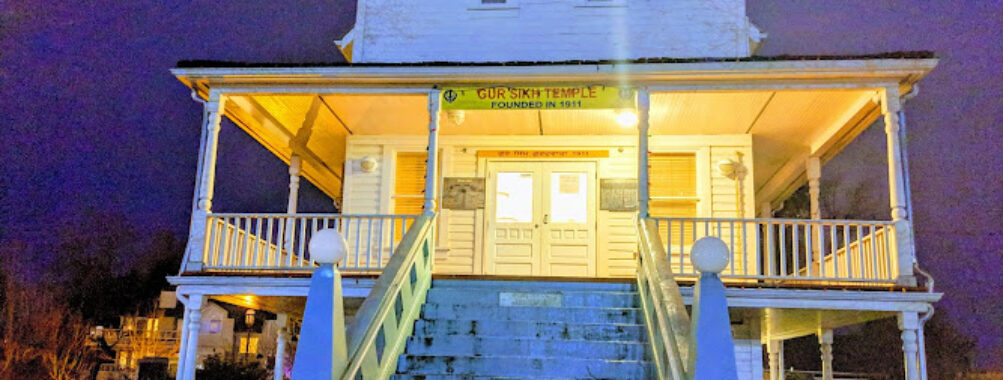
Gur Sikh Temple National Historic Site
Table of Contents
Description
The Gur Sikh Temple National Historic Site in Abbotsford is more than just a building—it’s a living story of resilience, faith, and community. Built by Sikh pioneers in the early 1900s, this temple stands as the oldest existing Sikh gurdwara in North America. Walking through its doors, you can almost feel the weight of history, the sweat of those early settlers who carried lumber on their backs up the hill to build it, and the pride of a community that refused to give up despite countless challenges. It’s not just a place of worship; it’s a cultural anchor that has stood the test of time.
Today, the temple continues to serve as a spiritual sanctuary for Sikhs while also welcoming travelers, history buffs, and curious souls who want to understand the immigrant story in Canada. Downstairs, the Sikh Heritage Museum offers a thoughtful look into the lives of those early pioneers, with rotating exhibits that highlight themes of migration, identity, and belonging. It’s small, yes, but it packs a punch—every corner feels intentional, every artifact tells a story. And while most visitors leave feeling inspired, it’s fair to say a few might find the museum modest compared to larger institutions. But honestly, that’s part of its charm. It’s intimate, it’s personal, and it feels like you’re being invited into someone’s home rather than a polished gallery.
What really stands out is the atmosphere. Even if you don’t follow the Sikh faith, stepping inside the prayer hall is grounding. The soft hum of prayer, the scent of wood, the quiet dignity of the space—it all makes for a surprisingly moving experience. I’ve been to many historic sites across Canada, but few have left me with the same sense of connection. The Gur Sikh Temple isn’t flashy, and it doesn’t need to be. Its power lies in its authenticity.
Key Features
- Oldest standing Sikh temple in North America, built in 1911
- Designated a National Historic Site of Canada in 2002
- On-site Sikh Heritage Museum with rotating exhibits
- Active place of worship with daily prayers and community gatherings
- Wheelchair accessible entrance, restrooms, and parking
- Family-friendly environment, welcoming for children
- Peaceful meditation space for visitors seeking reflection
Best Time to Visit
The temple is open year-round, but the experience can feel different depending on when you go. Spring and summer bring longer days and mild weather, making it easier to pair a visit with exploring Abbotsford’s surrounding farmland and mountain views. Fall has its own beauty—the crisp air and colorful leaves somehow make the temple’s wooden frame stand out even more. Winter visits are quieter, which I personally love; there’s something about stepping into the warm prayer hall on a cold day that feels extra comforting.
If you want to catch cultural events, keep an eye out for Sikh festivals like Vaisakhi in April. The temple often becomes a hub of activity then, with processions, music, and food. It can be crowded, yes, but it’s also the best way to see the community spirit in full swing. For those who prefer a more contemplative visit, weekdays outside of major holidays are usually calm and ideal for unhurried exploration.
How to Get There
Reaching the Gur Sikh Temple is straightforward. If you’re coming from Vancouver, it’s about an hour’s drive east along Highway 1. Abbotsford is well connected, so whether you’re driving, taking a bus, or even flying into Abbotsford International Airport, the site is easy to include in your itinerary. Public transit within Abbotsford can get you close, though I’d recommend driving if you want flexibility to explore the surrounding area. Parking is available on-site, and it’s accessible for visitors with mobility needs.
For travelers without a car, you can catch a regional bus from nearby cities, but be prepared for longer travel times. Taxis and rideshare services are also an option if you’re staying locally. Honestly, though, if you’re planning to see more of the Fraser Valley, renting a car is the way to go—it gives you freedom to wander and discover hidden gems along the way.
Tips for Visiting
First things first: remember that this is an active place of worship. Dress modestly, and be prepared to remove your shoes before entering the prayer hall. Head coverings are required inside, but don’t worry if you forget—scarves are often available at the entrance. It’s a small gesture, but it shows respect for the traditions of the space.
Give yourself at least an hour to explore both the temple and the museum. The exhibits downstairs change regularly, so even if you’ve been before, there’s a good chance you’ll see something new. Photography is usually allowed in certain areas, but always ask if you’re unsure. Some visitors like to sit quietly in the prayer hall, and honestly, I recommend it. Even if you’re not religious, the stillness has a way of slowing you down in the best possible way.
Accessibility is thoughtfully considered here, with wheelchair-friendly entrances, restrooms, and parking. Families with kids will also find the space welcoming—children are free to explore, and the museum’s exhibits are engaging without being overwhelming. Just keep in mind that there’s no restaurant on-site, so plan your meals accordingly. There are plenty of local eateries nearby, many offering authentic Punjabi food if you want to continue the cultural experience.
And one last thing: don’t rush. The Gur Sikh Temple isn’t a place you “check off the list.” It’s a place you experience. Take your time, let the stories sink in, and maybe even strike up a conversation with someone from the community. You’ll likely walk away with more than just photos—you’ll leave with a deeper understanding of the people who helped shape Canada’s history.
Location
Places to Stay Near Gur Sikh Temple National Historic Site
Find and Book a Tour
Explore More Travel Guides
No reviews found! Be the first to review!